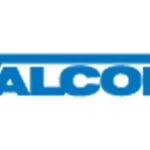As virtualization, IoT and AI-driven applications continue to expand exponentially in enterprises, commercial, entertainment and industrial operations, legacy networks are struggling to keep up with soaring data demand. This has left operators and integrators managing fragmented and inefficient networks, resulting in complex network administration and rising costs.
In response, the demand for solutions that streamline application performance — including AI — and ensure the reliable delivery of critical data has grown significantly. At the same time, the presence of multiple components from different manufacturers in these networks has made interoperability and convergence of mixed-criticality applications on the same network essential rather than optional. Addressing these challenges in an open ecosystem based on industry standards is a future-proof approach to converged networking across several markets.
What is Converged Networking?
Traditional networking models have long separated voice, video, best-effort data and time-critical data (e.g. industrial control signals, real-time audio) into distinct networks and dedicated computing devices. While effective in the past, the surge in data and growing need for strict low latency guarantees has driven up deployment, maintenance and troubleshooting efforts, leading to significant costs.
Converged networking, in contrast, unifies these individual “channels” into a single integrated network that transmits all types of traffic. By combining mixed-criticality applications under one networking infrastructure, converged networking brings efficiency, simplicity and saves money.
These networks operate over high-performance standards-based connectivity solutions, such as Ethernet, Wi-Fi or cellular networks (e.g. 5G), streamlining network design, minimizing hardware and cabling requirements, and improving scalability — an essential feature of modern and future-proof networks.
A key advantage of converged networking is the ability to prioritize different types of traffic (with mixed-criticality), making it an attractive solution for industries ranging from data centers and enterprise networks to Industrial IoT (IIoT), aerospace, healthcare, live performances and other networks with time-critical traffic requirements. This network convergency with mixed-criticality capability is powered by Time-Sensitive Networking (TSN) technologies and standards.
Foundation of Converged Networking
Developed by the IEEE 802.1 TSN Task Group, TSN capabilities and standards form the backbone of converged networking. TSN is a set of open industry standards designed to ensure precision time distribution and delivery of data with strict deadlines in converged networks. Each TSN standard addresses a specific function, collectively enabling seamless and predictable performance for mixed-criticality applications on the same network.
In a converged network, it is critical that high-priority traffic is delivered with bounded latency and minimal jitter despite the immense volume of data being transmitted on the same network.
Consider a factory floor where robotic arms, sensors and cameras operate over a TSN-enabled network. Robotic control systems require ultra-low latency to function correctly, but without TSN capabilities, their data could be delayed by lower-priority traffic, potentially causing disruptions.
To prevent this, TSN standards such as IEEE 802.1AS (Time Synchronization) and IEEE 802.1Qbv (Time-Aware Shaper) ensure that high-priority traffic is prioritized and delivered within strict deadlines with no interference from lower-priority tasks-such as video monitoring and general data transfers. This level of precision dramatically improves operational efficiency and enables the integrating of IT and OT on the same network.
The Importance of Certification
With numerous components interacting within converged networks, ensuring multi-vendor interoperability and conformance to industry standards is crucial.
Many organizations have established certification programs for TSN capabilities, ensuring compliance with key standards such as IEEE 802.1AS and IEEE 802.1Qbv. Through a rigorous testing and certification process, the certification verifies that devices meet standards, real-time performance, and synchronization requirements, which is especially critical in industries such as industrial automation, automotive and professional AV (pro AV).
By certifying TSN-capable devices down to the component level, manufacturers can ensure interoperability, reducing integration challenges and enhancing flexibility in deployment. As more certified products become available, businesses benefit from a wider selection of off-the-shelf solutions that seamlessly integrate into existing networks without disrupting operations.
The Future of Converged Networking with TSN
TSN-powered converged networking is poised to reshape the networking landscape by offering simplicity, cost savings and scalability. Rather than being confined to specific industries, TSN should be viewed as a critical enabler of modern networking, enhancing traditional infrastructures while preparing them for future demands.
Paired with certification programs driven by the industry, TSN allows customers to deploy tested, validated solutions with confidence — ensuring long-term efficiency and performance. With TSN adoption on the rise and certification efforts expanding, converged networking is set to become the gold standard for interoperable, future-proof networks.
Dave Cavalcanti is president of the Avnu Alliance.

































